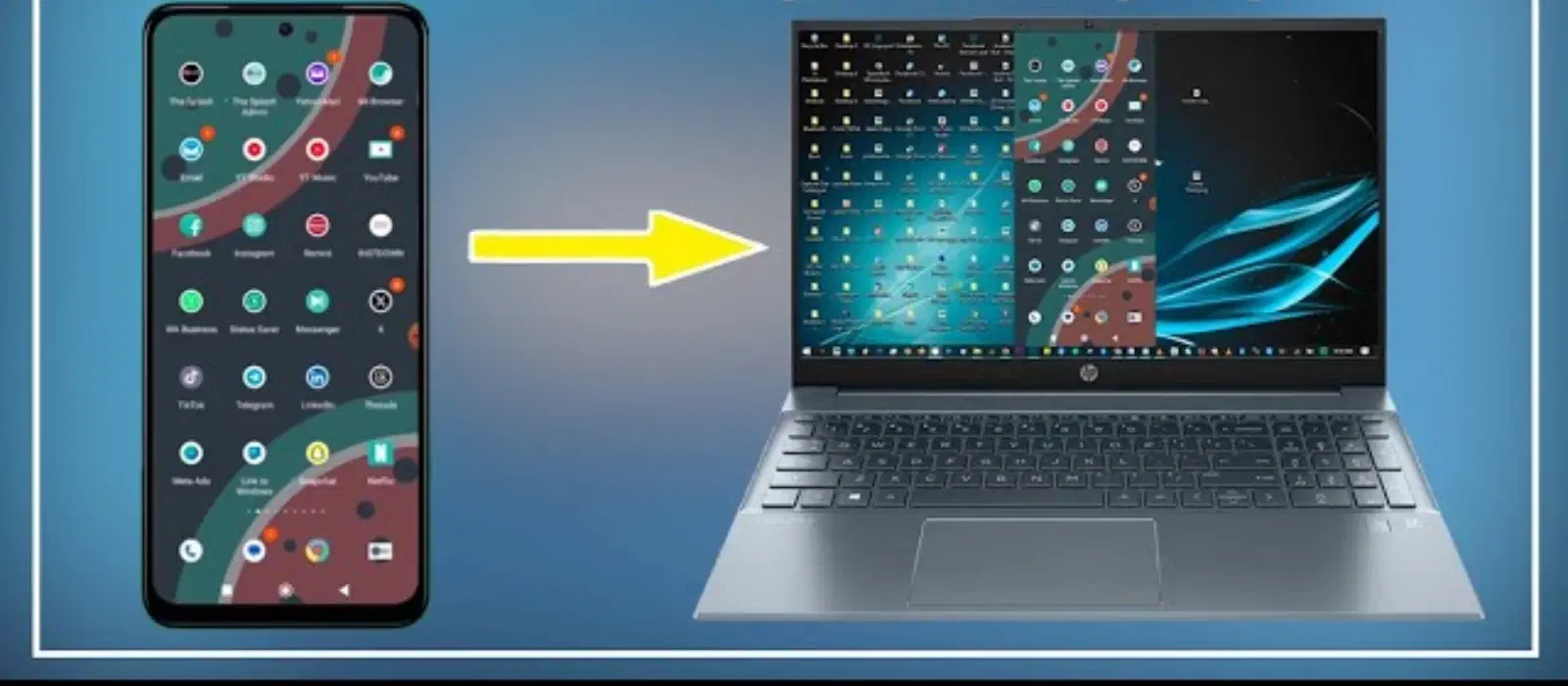
Consumer Electronics
•04 min read
Tired of fumbling with cables every time you want to transfer photos from your phone to your laptop? Discover the ease and flexibility of wireless photo transfers. This article explores how to transfer photos from phone to laptop without USB by exploring various wireless photo transfer methods, from using Wi-Fi and cloud storage to utilising Bluetooth technology. You will find clear and easy guidance, as well as answers to frequently asked questions to help you send pictures from phone to laptop effortlessly.
Many users are embracing the freedom that comes with ditching cables. Whether you are travelling or working remotely, wireless methods allow you to send pictures from phone to laptop without the restriction of physical connectors. This ideal method is not only convenient but also boosts productivity when time is of the essence.
Traditional USB transfers can instead drain your time and energy. It is not uncommon for users to face compatibility issues, damaged cables or even lack of USB ports on the latest devices. In contrast, wireless photo transfer methods provide a hassle-free alternative that simplifies your everyday tech needs.
Wi-Fi provides a seamless way to share photos between your phone and laptop. By connecting both devices to the same network, you can quickly transfer images without the need for cables. This method is efficient and supports large files, making it ideal for high-resolution images. Many apps support photo transfer using Wi-Fi, offering an intuitive and straightforward experience.
Cloud storage services such as Google Drive, Dropbox, and OneDrive allow you to upload photos directly from your phone and access them on your laptop. When you transfer photos via cloud storage, your images are saved and accessible from anywhere. This added benefit ensures that your photos are not only transferred seamlessly but also safely backed up in the cloud.
For a simpler solution, Bluetooth enables the quick transfer of photos between devices. Although it might be slower compared to Wi-Fi, Bluetooth is a great alternative for small batches of images. Follow the device pairing instructions, and soon you can start sending files with ease. This method makes it possible to send pictures from phone to laptop in a straightforward manner.
Google Photos offers automatic syncing between your devices. To set up, install the app on your phone, log in, and enable auto-backup for your photo library. Your images will be regularly updated and available on your laptop through the Google Photos website. Remember to manage storage limits on free plans by periodically reviewing and deleting unwanted photos.
Wi-Fi Direct offers a direct connection between your phone and laptop without an intermediary network. Once enabled, apps such as ShareIt or Zapya can facilitate the transfer. Simply choose the photos you wish to transfer and let the app guide you through a quick and secure sharing process.
Another practical option is to send photos as email attachments. Compose a new message on your phone, attach the desired photos, and send it to yourself. On your laptop, open your email to download the images. To avoid delays or failures, compress the files if they are too large, ensuring a smoother transmission experience.
Backing up your photos is essential. Wireless backups simplify this process by automatically storing your images on cloud services like iCloud or Google Photos, ensuring your memories are safe and easily accessible. This method eliminates the worry of losing photos due to device problems, providing peace of mind and continuous data protection.
For users dealing with large media files, dedicated software such as MobileTrans or DroidKit can be extremely helpful. These applications are designed to manage and enhance file transfers by offering premium features and reliable performance. Evaluate the features and pricing to choose the best option for your specific needs.
Pro Tip: Maximise Your Wireless Transfer Speed
Did you know? Ensuring both devices are connected to the same high-speed Wi-Fi network can significantly boost transfer speeds and reduce interruptions during wireless photo transfers.
Occasionally, wireless transfers might face difficulties due to connectivity hiccups or incompatible device settings. If you encounter slow speeds or disruptions, check that both devices are well-connected to a stable network. Verifying application settings and ensuring compatibility are practical steps to resolve minor issues quickly and efficiently.
Privacy is as important as convenience. When transferring photos, avoid public Wi-Fi and consider using encrypted networks to secure your data. This extra measure helps protect your privacy every time you transfer images, adding an extra layer of safety to your digital life.
Use wireless methods such as cloud storage, Bluetooth, or Wi-Fi Direct to transfer photos and files easily.
You can use apps like Google Photos, AirDrop alternatives, or dedicated software to send photos wirelessly.
For a seamless experience, opt for cloud storage services like Google Drive or use Wi-Fi Direct-enabled apps.
Using Wi-Fi Direct or cloud storage services typically offers faster transfer speeds compared to Bluetooth or email.
Yes, you can use Bluetooth or offline apps like Feem to transfer photos without relying on Wi-Fi or USB cables.
Transferring photos from your phone to your laptop without USB has never been easier, thanks to the variety of wireless options available. Wireless methods not only simplify the process but also offer flexibility and convenience for users on the go. By following the steps outlined and utilising the various wireless photo transfer techniques, you can confidently manage your digital memory library without the need for cables. Explore these options and enjoy hassle-free, secure photo transfers that match your dynamic lifestyle.